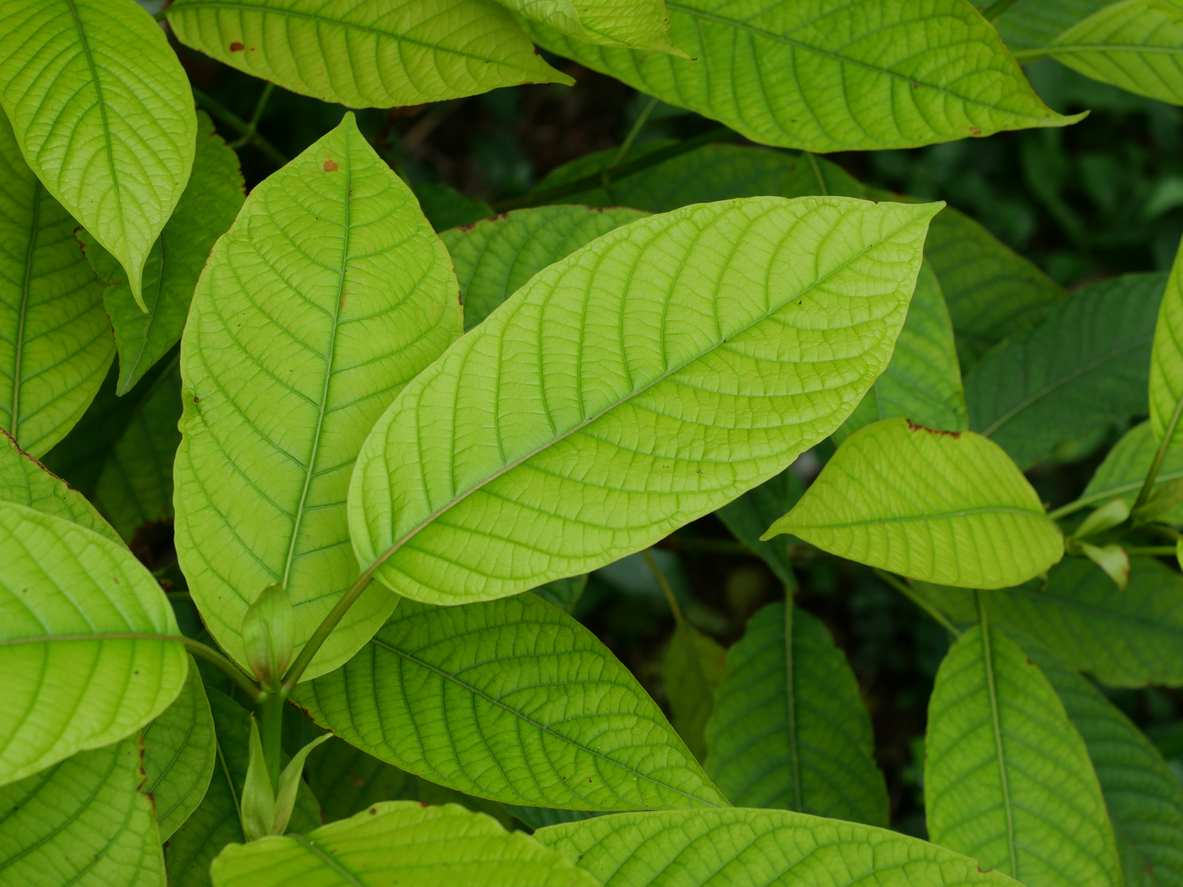Exploring the Nootropic Potential of Kratom: A Brief Guide

Contents
Kratom (Mitragyna speciosa), comes from a Southeast Asian tree. Extracts from the plant’s leaves provide possible therapeutic and recreational applications, from focus to euphoria.
Join us as we share our knowledge about kratom and nootropics. Discover the potential mental benefits of this popular herbal extract. Let’s get started!
What is a nootropic?
Nootropics are diverse groups of compounds that improve cognitive functions like processing information, memory, and focus. They’re also known as “smart drugs,” with applications ranging from prescription medications to over-the-counter products.
There’s a vast range of substances with nootropic properties, including:
- ADHD medication
- Creatine
- Narcolepsy medication
- Nicotine
- Caffeine
- Dietary supplements
- Various fitness products
Nootropics work by increasing blood circulation and improving the supply of oxygen and glucose to the brain. They also interact with the metabolism of cells within the central nervous system (CNS).
Aside from medicinal applications, the popularity of nootropics for use among healthy people is growing. Many seek new ways to stimulate their mind, from students to athletes in training.
Does kratom have any nootropic properties?
Various over-the-counter products are available for enhancing cognitive function, but most contain forms of semi-synthetic ingredients. The demand for all-natural supplements is rising, and consumers claim taking kratom as a nootropic has multiple benefits.
The plant has a history of usage among laborers in Southeast Asia during the 1800s. Farmers could work longer days without fatigue from chewing kratom leaves.
This herb’s popularity grows as people discover its effects and possible applications. Enthusiasts claim low doses of kratom offer a natural alternative to other nootropics. The supplement reportedly has multiple similar attributes, such as:
- Stimulation: Consumers claim taking small quantities of kratom provides mental and physical energy.
- Focus: Enthusiasts speak about the positive effects of the herb for concentration and cognitive processing. Many students use kratom for studying and focus and claim it helps with attention and the stress of exams.
- Memory: Some consumers report the supplement enhances their ability to retain information.
- Motivation: The effects of kratom in low doses may improve your desire to be productive.
- Mood: Many enjoy the supplement’s uplifting sensation and say it provides feelings of euphoria and happiness.
- Libido: A common claim among consumers is that the herb enhances their sexual drive and performance.
Further research is required to define kratom as a nootropic, but the supplement exhibits many similar properties. Mitragyna speciosa and caffeine are part of the same plant-based family, and there are multiple crossover effects.
Many consider coffee a nootropic, although it technically isn’t on the level of medicines like modafinil or methylphenidate. Kratom may have a similar loose status, and the subject causes debate among fans of the herb.
Some say that kratom is a nootropic due to its effects, but this only applies to low-dose consumption. Taking larger quantities of the herb delivers opiate-like feelings such as relaxation and sedation.
The effects of consuming high doses of kratom oppose the purpose of nootropics. It’s difficult to categorize the herb as a “smart drug” due to its polarizing properties.
Defining something as a true nootropic is complex as the term’s application is often loose. Even caffeine causes debate as it doesn’t technically meet all the scientific criteria of a “smart drug.”
It’s more likely that kratom isn’t a nootropic in technical terms. Consumers frequently use the supplement as an alternative to other mental stimulants, but the role of dosage is significantly different.
Kratom strains with possible nootropic effects
Kratom strains differ depending on the color of their leaf veins, the region they’re from, and the harvesting method. The three primary types are red, white, and green. Each variety’s alkaloid makeup is unique and offers distinct effects.

The supplements are generally available as powders or as pills. Personal preference dictates the means of consumption, but the effects depend on the strain. Let’s look at some popular varieties with possible nootropic qualities.
White Maeng Da
White vein strains provide the most energizing effects and offer the best examples of using kratom as a nootropic. Maeng Da means “pimp grade,” referring to particularly potent varieties of any color.
This strain offers stimulation with an added kick and reportedly works as a nootropic more than most kratom varieties. White vein products generally provide more mental stimulation than other types.
Green Malay
Red vein strains are known to provide euphoric and sedative effects compared to white, and green varieties sit in the middle. Green Malay pills typically offer a balance of stimulation and relaxation, but the high can change according to the dosage.
This variety’s name refers to its geographical origin. The strain comes from Malaysia and reportedly leans more toward energizing effects.
White Bali
The white Bali strain is similar to Maeng Da but offers a milder buzz. Consumers report uplifting sensations of joy without overwhelming stimulation.
This variety from Bali may provide a perfect example of the similarities between kratom and other nootropics.
Ultra blend Bali kratom
The ultra blend Bali kratom is a fusion of red and green vein strains. Most consumers describe this variety’s effects as soothing and balanced.
A combination of red and green kratom isn’t as effective for nootropic purposes as white strains. This perfect Bali blend is famous for its relaxing buzz and purportedly relieves stress and anxiety.
Red Borneo
The red Borneo strain isn’t ideal kratom for nootropic purposes, but it’s a favorite among many enthusiasts for other reasons. This variety is potent, and consumers claim the effects are euphoric. Take Borneo pills for accurate dosing.
Red vein varieties generally lean toward relaxation and sedation, and reports suggest they provide opiate-like pain relief. Whether you prefer the convenience of capsules or the versatility of kratom powder, start slow with this potent strain.

Kratom is a nootropic topic
While the scientific jury is still out, most enthusiasts declare kratom is a nootropic. The herb possibly offers many of the same neurological effects as other popular products. Purchasing from a trusted vendor is essential, whatever your purpose for using the supplement.
At Kratom Country, we take pride in providing our customers with premium products. We guarantee stringent five-step lab testing, freshness, and purity.
Check out our natural kratom supplements and discover high-quality powders and capsules to suit your preferences.
FAQs
Here are some frequently asked questions about nootropics, with answers from our experts.
Is kratom a safe alternative to traditional nootropics?
Further research is required, but the evidence is mounting that kratom is safer than many well-known nootropics.
There’s no federal ban on the supplement, mainly because the government can’t provide scientific proof of it being dangerous. Consumers also claim that using kratom is an effective natural alternative.
What are the potential side effects of taking kratom as a nootropic?
As with almost anything we consume, not everyone responds well to kratom. A minority of people experience side effects from using the supplement.
The most common adverse reactions are nausea and diarrhea, although these are rare and usually the result of overindulgence. Other side effects of kratom may include anxiety, similar to how coffee can exacerbate the issue.
How does kratom compare to other popular nootropics?
The popularity of kratom as a nootropic is rising due to it being completely natural. Caffeine is the most popular substance people use to enhance their cognitive function in daily life. It originates from a plant, but many combine the drink with sugar and milk.
Other popular nootropics include creatine and even nicotine. It’s safe to say that responsible kratom consumption is significantly better and safer than smoking tobacco.
What is the recommended dosage of kratom for nootropic use?
The recommended dosage for kratom is generally 1–5 grams for a mild to moderate experience. Some people take between 5–15 grams for heavier effects like relaxation and sedation.
When considering the dosage for the supplement, it’s crucial to remember some strains are more potent than others. We recommend sticking to lower quantities for stimulation when using kratom as a nootropic.
Where can I purchase high-quality kratom for nootropic use?
Due to the lack of federal regulations in the US, the kratom market has some bad-faith actors. In most states, it’s possible to buy the herb from head shops and gas stations. We recommend avoiding these sources, as they rarely provide any quality assurance.
The best place to purchase kratom is from a trusted online vendor. Look for guarantees of lab-tested, high-quality products.
About the Author

Chloe Collins is a skilled kratom maker passionate about crafting high-quality kratom products at Kratom Country. She has been working in the kratom industry for over a decade, mastering the art of creating unique blends and formulations that cater to the specific needs of her clients.
Chloe is known for her dedication to using only the best quality ingredients in her kratom products, ensuring that her customers receive the full benefits of this traditional herb.
She is committed to educating people about the kratom benefits and its responsible use and is always willing to share her knowledge and expertise with others.
She often writes educational articles about Kratom’s effects and its benefits for health.

Comments